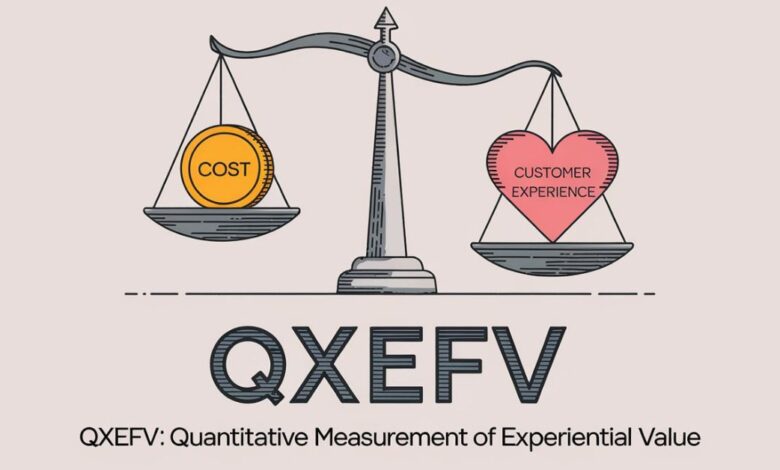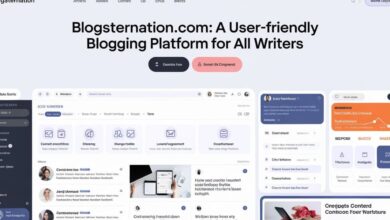Qxefv – Understanding and Leveraging Quantitative Measurement of Experiential Value!

QXEFV, or Quantitative Measurement of Experiential Value, is a novel approach to evaluating the worth and impact of products and services. It emphasizes user experience and measurable outcomes.
This model is gaining traction as companies realize the importance of understanding the nuances of customer experience, from emotional connections to ease of use.
What is QXEFV? – The Introduction!
QXEFV, or Quantitative Measurement of Experiential Value, represents a significant shift in how businesses and organizations assess the worth of their products and services. Unlike traditional evaluation metrics that rely solely on cost or tangible utility, QXEFV integrates customer experiences as a primary measure of value. By quantifying user experiences and gauging satisfaction in structured ways, QXEFV allows businesses to understand better what makes their offerings valuable to their audience.
This model is gaining traction as companies realize the importance of understanding the nuances of customer experience, from emotional connections to ease of use. As customer loyalty becomes increasingly tied to the overall experience, implementing QXEFV can set brands apart in a competitive landscape.
Why QXEFV Matters in Today’s Experience-Driven Economy?
In the modern market, experiential value is a key differentiator. Traditional value metrics often need to capture the impact of experiences on user satisfaction. Here’s why QXEFV has become crucial:
- Impact on Consumer Choices: More than ever, consumers choose brands based on factors beyond just product quality or price. They seek meaningful experiences, ease of interaction, and a sense of connection. QXEFV helps quantify these aspects, offering insights into what makes a product or service resonant for users.
- Influence on Market Positioning: Businesses can distinguish themselves in saturated markets by focusing on experiential metrics. QXEFV offers insights that enable companies to position themselves around user satisfaction and engagement rather than price alone.
- Driving Brand Loyalty and Advocacy: Satisfied customers are likelier to become loyal advocates. By measuring experiential value through QXEFV, companies can identify what drives customer loyalty and refine their offerings to meet those needs.
- Shifting Focus in Marketing and Product Development: As businesses rely more on customer-centric strategies, experiential value data has become a vital tool for marketers. With QXEFV, companies can tailor products, advertising, and engagement efforts to align with consumer desires, ultimately improving ROI and satisfaction.
The Core Components of QXEFV – Must Explore!
QXEFV relies on several components, each designed to quantify different aspects of user experience. Here’s a look at these components in detail:
- Quantitative Analysis involves collecting measurable data on user satisfaction and engagement. Surveys, feedback forms, and digital interaction tracking provide numerical insights into how users perceive the product.
- Behavioral Insights: QXEFV considers user behavior, tracking how customers interact with the product or service over time. Behavioral data helps businesses understand which features users find valuable, what creates friction, and how users’ needs evolve.
- User-Centric Metrics: Instead of focusing solely on traditional key performance indicators (KPIs) like revenue, QXEFV introduces metrics that capture user satisfaction and overall experience. This might include metrics like ease of use, time-to-value, and perceived quality.
How QXEFV Works – A Step-by-Step Process for Implementation!
Implementing QXEFV involves a structured process, each step designed to capture and quantify user experience effectively. Here’s a detailed breakdown of the QXEFV process:
Define Experience Goals and Success Criteria:
The first step is to establish clear experiential goals. What aspects of the experience do you want to improve? Companies should consider goals that resonate with their target audience and align with their brand values. For example, an e-commerce brand may focus on improving the checkout process to reduce friction, while a tech company might focus on enhancing user satisfaction with its app interface.
Develop Feedback Mechanisms and Data Collection Tools:
Gathering data is critical to QXEFV. Feedback mechanisms can include surveys, customer satisfaction ratings, and in-app feedback options. Digital tools, such as heatmaps or session replays, can track how users navigate an interface, providing valuable data on user preferences and pain points.
Implement Measurement Tools and Techniques
- Net Promoter Score (NPS): This is a straightforward customer loyalty and satisfaction metric. It asks users to rate the likelihood that they would recommend a product to others.
- Customer Satisfaction Score (CSAT): CSAT provides insights into specific aspects of the experience, such as ease of use or quality of customer support.
- Engagement Metrics: Track time spent on a platform, frequency of visits, and repeat interactions.
Analyze the Data and Derive Insights:
Once data is collected, it’s time to analyze it. Companies can use sentiment analysis, machine learning algorithms, or visual dashboards to spot trends and identify areas of improvement. Insights derived from this analysis are foundational to the iterative nature of QXEFV as they guide future adjustments.
Adjust and Improve the Product or Service Based on Findings:
Based on the insights, companies can make iterative adjustments to improve the user experience. For instance, a company that discovers a high friction point during checkout may streamline the process by offering more flexible payment options or reducing form fields.
Key Benefits of Implementing QXEFV for Modern Businesses!
QXEFV offers many benefits, both tangible outcomes and less quantifiable improvements. Here’s why companies that embrace QXEFV often find themselves at a competitive advantage:
- Enhanced Customer Loyalty: By focusing on customer satisfaction, companies can create a loyal customer base, increase retention rates, and improve lifetime value.
- Data-Driven Decision Making: QXEFV offers actionable insights derived from real user experiences. Instead of relying on assumptions, companies can base decisions on data, leading to more targeted improvements.
- Increased Brand Differentiation: Focusing on experiential value can set a brand apart. Companies can distinguish themselves from competitors by aligning closely with what users find meaningful.
- Improved Product Development: Data gathered from QXEFV can highlight gaps and opportunities, allowing businesses to create better, user-focused products.
Challenges and Limitations of QXEFV – The Concerns!
Implementing QXEFV comes with its own set of challenges, which businesses need to be aware of:
- Data Privacy Concerns:
QXEFV requires collecting user data, which raises privacy concerns. Companies must ensure they comply with data protection regulations and prioritize user consent.
- Resource Requirements:
QXEFV is resource-intensive. Collecting, analyzing, and acting on experiential data can require a significant investment, making it challenging for smaller businesses.
- Scalability Issues:
Scaling QXEFV for more extensive user bases can present logistical challenges, especially when analyzing complex behavioral data.
- Complexity of Measuring Qualitative Experiences:
While QXEFV tries to quantify user experiences, there’s always a risk of oversimplifying or misinterpreting qualitative data.
Future of QXEFV and Emerging Trends –What’s Next!
QXEFV is still evolving, and emerging technologies are likely to play a significant role in shaping its future:
- AI and Machine Learning for Deeper Insights: AI-driven tools may allow companies to interpret experiential data more accurately, offering predictive insights into customer needs.
- Real-Time Data Analysis: As real-time data collection becomes more feasible, businesses can adapt even faster to user needs, enhancing the relevancy and timeliness of changes.
- Augmented Reality (AR) and Virtual Reality (VR): For industries like retail or tourism, AR and VR experiences are becoming part of the experiential value. QXEFV can help measure these immersive experiences to provide even deeper insights into user engagement.
Frequently Asked Questions:
How is QXEFV different from traditional value measurement?
Unlike traditional methods focused on cost or utility, QXEFV emphasizes the overall experiential value perceived by users.
Why should businesses adopt QXEFV?
QXEFV allows businesses to build deeper customer relationships, improve retention, and make data-driven improvements.
What tools are best for implementing QXEFV?
Tools like sentiment analysis software, customer satisfaction surveys, and user engagement metrics are essential for QXEFV.
Conclusion:
QXEFV, or Quantitative Measurement of Experiential Value, is an innovative method for assessing the value and impact of products and services. It focuses on user experience and quantifiable results.



